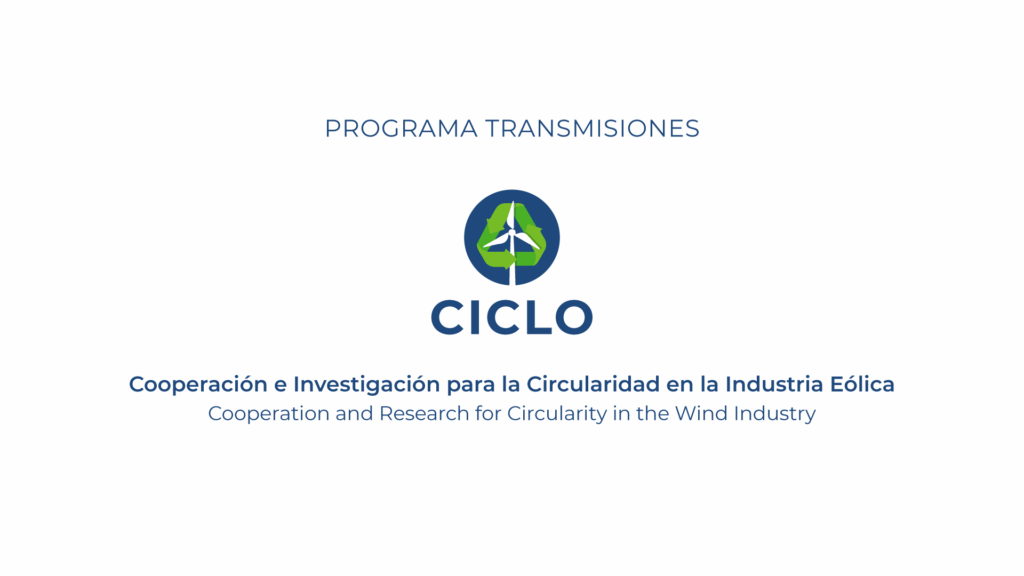CICLO Project
Cooperation and research for circularity in the wind industry
Main objective
The fundamental objective of the CICLO project is to research new technological solutions for reuse and recycling, including pyrolysis, solvolysis, and biorecycling, and the development of intermediate (SMC, BMC, and textiles) and final products to boost the circular economy of composites in the renewable energy sector, specifically in the recycling and end-of-life recovery of wind turbine blades and other composite components used in wind turbine construction, such as nacelles, electrical cabinets, etc.
Research will also be conducted to develop new, more easily recyclable resins for composites.
Recycling approach
Despite previous progress, significant challenges remain in all phases of the composite recycling process, from collection to recycling and recovery of materials, which this project seeks to address.
Through a comprehensive approach that includes separation, extraction, recycling, and processing, the goal is to recover virtually 100% of the materials.

Project execution
The 48-month CICLO project represents a significant step toward a circular economy by focusing on the recycling and recovery of composite materials used in wind turbine construction.
Although it is currently possible to recycle or reuse the metal components of a wind turbine, the blades themselves present a complex challenge due to their heterogeneous composition: materials composed of thermosetting polymer resins reinforced with glass, carbon, or hybrid fibers. This material is practically unrecyclable because it is difficult to properly decompose and separate using existing recycling processes.
This research aims to promote the comprehensive repurpose of those areas of the blade that allow it, without decomposing into more elemental materials, taking advantage of their properties, as well as optimizing the recovery of fibers, lightweight materials, and thermal and chemical recycling by-products. The goal is to achieve at least 90% of the recycled fibers and a recycling by-product collection efficiency of over 75%.
Furthermore, it seeks to reduce the formation of organic contaminants in thermal processes by 50% and improve the enzymatic degradation of epoxy, polyester, and polyurethane resins. These advances will not only strengthen the sustainability and efficiency of composite recycling but will also promote the creation of structural materials that incorporate high percentages of recycled fibers and recyclable resins, facilitating their end-of-life recycling.

